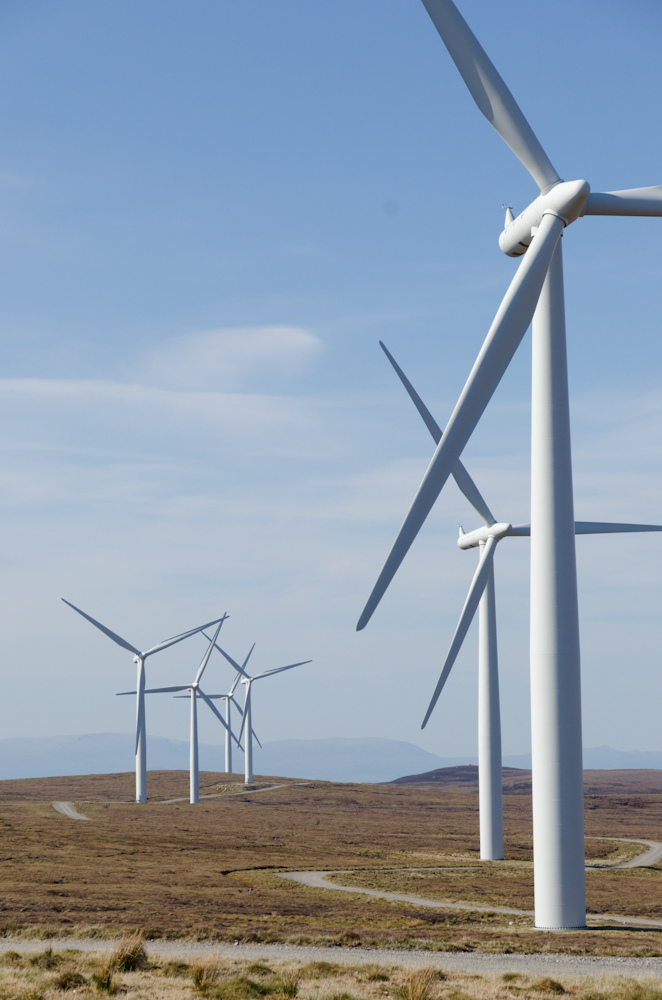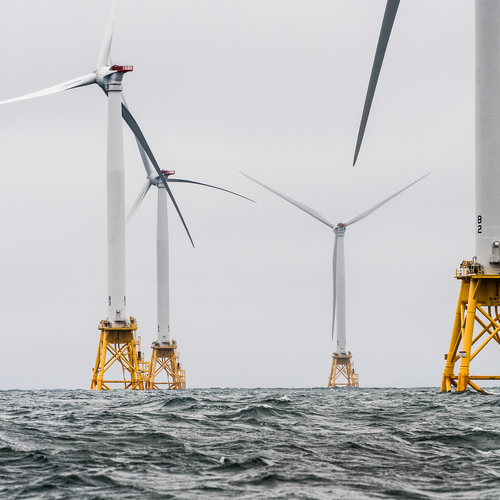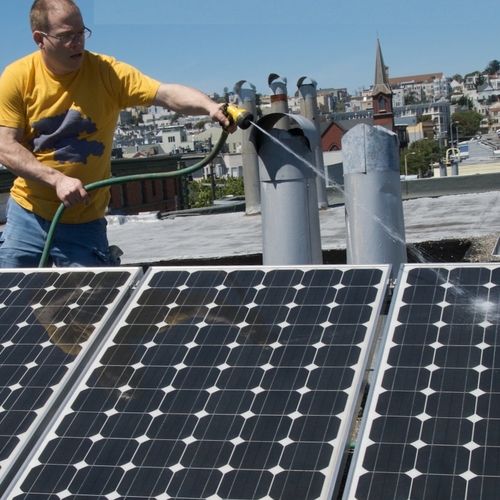
Image Credit: Steve Abraham via Flickr
By JULES KORTENHORST and KIERAN COLEMAN
The U.S. Energy Information Administration’s (EIA’s) most recent Annual Energy Outlook (AEO) should give anyone watching today’s energy markets a jolt of surprise. Not for projecting that U.S. energy demand will grow by an average of 0.4% per year after two decades of evidence to the contrary. Not for presenting major alternative scenarios only in the cases of cost and technology improvements in the oil and gas industries. But for exhibiting erroneous data about the costs of renewables, and for its simple and outdated outlook on how the market is changing and will in time be transformed.
The danger is that key decision-makers will make decisions in accordance with an altogether different future than might otherwise result from current market activity. This risk stems from the agency’s opaque assumptions and modeling methodology, which have recently been the subject of significant criticism. In response, the EIA has sought to create a tenuous distinction between its “projections” and “forecasts” that requires mental acrobatics to accept — as do the annual outputs of its work.
Weekly Newsletter
Get building science and energy efficiency advice, plus special offers, in your inbox.
Are we looking at the same market?
In a two-part tragedy, incorrect initial positions go on to influence completely outdated expectations about the composition of the American energy landscape through 2050. To its credit, EIA analysts read the news (if selectively): the AEO projects that renewables will be among the fastest-growing segments in electricity generation markets.
But the EIA assessment of generation costs across technology types in 2022 more closely resembles a copy-paste of renewables’ market data from back in 2015. It’s no wonder the EIA expects that policy will be the near-exclusive driver of renewables’ market growth, by way of state-enforced procurement requirements and federal tax credits.
EIA methodology is a key reason why the AEO’s citation of levelized costs (those upfront costs spread over an energy asset’s lifetime generation) seems so obsolete. Suffice it to say that the EIA ignores the average results of recent tenders in the U.S. and elsewhere when compiling its forward-looking average price estimates. As a result, stagnating future prices — wind and solar are estimated to decline by only $3/MWh from 2019 to 2022, unsubsidized — underlie EIA’s projection that capacity installations over the same period will be only 60% of actual annual totals for the last two to three years.
In contrast, indicators over the past 18 months are regularly showing that large- and medium-scale solar and large-scale wind prices are far more competitive than marginal costs from traditional source — especially when they are sited near to load, as most often only modular renewables can be.
This, in turn, is enabling still-expensive storage to be coupled with renewables generation to firm supply for portions of the day and provide grid services in addition to those offered by renewables with smart inverters. Collectively, these trends indicate the rapid approach of widespread grid parity between traditional sources and less-intermittent clean energy generation.
International markets drive this momentum
The EIA should look to real, current market dynamics to inform its initial positions. To start, the market is now global. Following leadership in early market development efforts by Europe and the U.S., countries like China, India, and Mexico have set their sights on securing sustainable economic development and near-term, cutting-edge jobs for their constituents.
This motivates large-scale procurement of renewable energy that their domestic companies are simultaneously racing to manufacture and distribute, often with a boost in expertise and capital from established companies in developed markets.
Second, international markets are scaling — fast. As each large-scale procurement sees low bids from not one or two, but 10 bidders, governments, companies, and communities are encouraged to go back to the market with more and larger tenders — even going so far as to free up capacity by canceling previously planned coal plants.
Large, competitive procurements in LEDs, renewables, and now even electric vehicles ensure that buyers can leverage market forces and use existing expertise to innovate technology and delivery models that achieve step changes down the learning curve to reduce cost. Even though tenders may occasionally risk overestimating future cost declines, these are marginal in relation to their empowerment of cost reduction trends that are consistently more rapid than analysts expect.
Third, technology markets are converging to drive nonlinear deployment. Manufacturers of lithium-ion storage, for example, are serving multiple segments like electric vehicles and grid-scale storage; thus growth in any one segment will enable cost declines that support growth in others. Further, storage will support intermittent but predictable renewables generation, unlocking new customers’ interest and further deployment.
As evidence of this trend, leading project developers in the U.S. — some of which are subsidiaries of traditional utilities hedging their bets — have merged traditionally separate teams to analyze, bid, and build integrated and technology-agnostic portfolios of cost-effective generation resources.
Together, market dynamics like these, missed by the EIA, tell us that the proverbial cat is out of the bag, and its claws inexorably stretch back into U.S. markets. In Colorado, Xcel’s all-source solicitation in late 2017 demonstrated just this, with one of the largest energy companies in the U.S. submitting a solar plus storage bid for $36/MWh based on the cost of components mostly built abroad. Attempts to wrestle it back risk ceding the U.S. businesses’ cutting-edge innovation to foreign businesses in a global market estimated at $1 trillion per year by some of the world’s largest companies.
Reality
The EIA needs to start looking at current market offers and consistent patterns in actual deployment versus its historical forecasts. Only in this way will it start to come to grips with the real trends in the accelerating energy transition, and have the insight to be able to project or forecast the revolution that is coming. If not, it risks becoming totally irrelevant as a source of information and a poor guidance for business leaders and policy makers across the country.
Jules Kortenhorst is CEO of the Rocky Mountain Institute. Kieran Coleman is a senior associate at RMI. © Rocky Mountain Institute. Published with permission. Originally posted on RMI Outlet.















3 Comments
Let The Energy Use Madness Continue
I came across this article by Martin from nearly 6 years ago, a fine piece.
https://www.greenbuildingadvisor.com/blogs/dept/musings/how-perform-heat-loss-calculation-part-2
Here is the counterpoint in today's news.
https://www.theguardian.com/environment/2018/mar/02/clean-coal-america-kemper-power-plant
https://www.reuters.com/article/us-ceraweek-shell-reserves/how-shell-hid-a-whale-before-placing-mexican-oil-bet-idUSKCN1GE1G2
Response to Doug McEvers
Doug,
GBA has published several articles on the Kemper Project debacle, including a report by Scott Gibson in 2016.
I'm not sure, however, what that story has to do with my article about heat loss calculations.
Hard to Read
I understand the general point that EIA forecasts are incorrect, and someone may make bad decisions based on these bad forecasts.
But the details would be easier to understand with a graph that shows actual costs vs EIA projected costs.
What would be even better would be to briefly state what the actual costs are, and how that should affect reader's decisions.
Without that, this is just a rant about some government organization that is doing a lousy job.
Log in or create an account to post a comment.
Sign up Log in